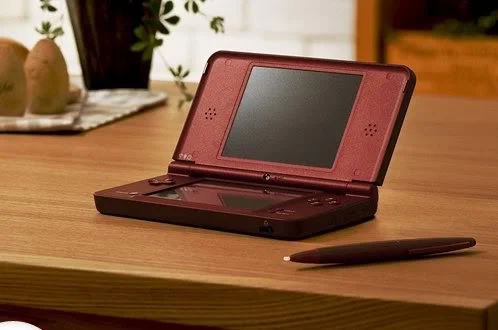In previous posts we gave you some tips on how to pawn guitars or power tools. However, you can also pawn luxury items. That’s why today we bring you a comprehensive guide with everything you need to know to pawn your Louis Vuitton handbag, including how to tell if a Louis Vuitton handbag is a fake.
What Makes Louis Vuitton Handbags so Special?
If you own a Louis Vuitton handbag, chances are good that you already know that they are special items.
However, it’s always worth taking a quick look at the characteristics that make these handbags so sought-after.
- As of 2021, Louis Vuitton is considered the world’s most valuable luxury brand, besting competitors such as Chanel or Hermès by a wide margin.
- Louis Vuitton (Louis Vuitton malletier) was founded as a luggage business in 1854 in Paris. Since then, the brand has focused on mastering every detail of their craft.
- Louis Vuitton products are handmade by experienced craftsmen.
- The brand displays an extreme commitment to quality and tradition. They use only materials of the highest quality that withstand the passage of time. A Louis Vuitton handbag made today is produced using the same exacting processes and attention to detail as a Louis Vuitton handbag made 40 or 50 years ago.
- All Louis Vuitton products are sold exclusively in Louis Vuiton stores and through a couple of official websites.
- Louis Vuitton handbags (and Louis Vuitton products in general) are never on sale — Keep it in mind: this is important for reasons we’ll see later.
Louis Vuitton Handbags: Some Facts You Need To Know
Before we dive into the details of spotting fake Louis Vuitton bags, there are some technical details you need to know.
Patterns
Louis Vuitton products are immediately recognizable thanks to the patterns they sport, and handbags are no exception. The two most popular types of LV patterns are:
- Damier canvas: a checkered pattern with variations like Damier Azur, and Damier Graphite.
- Monogram canvas: the most iconic Louis Vuitton pattern alternates the LV logo with flower designs in round and diamond shapes.
Vachetta Leather
The trim, handles, and piping of many Louis Vuitton handbags are made of a special type of leather called vachetta leather.
Since vachetta leather is untreated, it ages with the bag and reacts to agents like the sun or the natural oils present in human hands. When first purchased, vachetta leather is light beige, but over time it darkens to a deep brown or caramel.
Sizes
Louis Vuitton handbags come in four different sizes. Each size is identified by two letters:
- BB or “Baby Bandoulière,” the smallest version of a handbag.
- PM or “Petit Modèle,” which means “small model” in French. Slightly larger than BB bags.
- PM or “Moyen Modèle,” or “medium model” in French.
- GM or “Grand Modèle,” the largest version of a handbag.
Louis Vuitton Date Codes
From the early 1980s until 2021 Louis Vuitton used date codes on its products. Here’s how LV date codes apply to handbags:
- Before 1980: There were no product codes. Only the provenance was indicated.
- Early 1980s: Three or four numbers indicating the year (first two numbers) and month (last one or two digits) of fabrication.
- Early to late 1980s: Codes three or four numbers and two letters. The first two numbers indicate the year of fabrication, the following number(s) represents the year, and the letters indicate the country where the handbag was made.
- From 1990 to 2006: Product codes are composed of two letters and four numbers. The two letters indicate the location where the bag was made. The second and fourth numbers indicate the year of fabrication and the first and third numbers designate the month when the bag was made.
- From 2007 to 2021: The system was revised, while still comprising two letters and four numbers. The two letters indicate the location where the bag was made. The second and fourth numbers indicate the year of fabrication and the first and third numbers designate the week of the year when the bag was made.
- March 2021-today: Starting March 1st, 2021, LV phased out date codes in favor of radio frequency identification (RFID) chips that contain information about the product and can only be read by Louis Vuitton employees.
 Louis Vuitton Country Codes
Louis Vuitton Country Codes
While chips are a game changer, the old date codes will still be around for a while, given the durability of LV items. Since you’ll still need to make sense of them, here are the initials used to indicate the place of fabrication in the pre-2021 date codes.
- France: A0, A1, A2, AA, AAS (Special Order), AH, AN, AR, AS, BA, BJ, BU, CO, CT, CX, DR, DT, DU, ET, FL (also USA), LA (also USA), LM (also Spain), LW, MB, MI, ML, MM, NO, RA, RI, SA (also Italy), SD (also USA), SF, SK, SL, SN, SP, SR, TA, TH, TJ, TN, TR, TS, TY, VI, VX
- Italy: BC (also Spain), BO, CE, FH (also USA), FO, FP, MA, NZ, OB, PL, RC, RE, SA (also France), TB, TD
- Spain: BC (also Italy), CA, LO, LB, LM (also France), LW, GI, UB
- USA: FC, FH (also Italy), FL (also France), LA (also France), OS, SD (also France), TX
- Germany: LP, OL
- Switzerland: DI, FA
- Relined Items: DK
How to Tell if a Louis Vuitton Handbag Is a Fake
If you are interested in pawning a Louis Vuitton handbag, the first step is to verify its authenticity.
As with any other status symbol, Louis Vuitton bags are often counterfeited, so you need to make sure your Louis Vuitton handbag is authentic before pawning it.
As mentioned earlier, if you bought a new Louis Vuitton handbag in a store other than an official Louis Vuitton store, then the bag is almost certainly a fake.
Similarly, if you purchased a new Louis Vuitton handbag online at a discount, then the bag is an imitation — remember, LV products are never on sale.
Finally, the internet has made it easier than ever to identify LV fakes. Armed with the knowledge provided in this article, check a reliable source online and verify the details of your bag. For example, if your bag is BB but that specific model was never produced in that size, then the handbag is counterfeited.
Use common sense too. If a supposedly 20-year old LV bag has handles and trims made of light vachetta skin (which tends to become darker over time), that’s a red flag that should definitely put you on guard.
Looking to Pawn or Buy Luxury Items in Southern California? Contact AJ’s Super Pawn!
If you are looking for a dependable, trustworthy pawn shop in Southern California, look no further than AJ’s Super Pawn.
We have locations in Pomona and Chino California. Give us a call today (Pomona: (909) 622-0334 , Chino: (909) 465 5456) or fill out the contact form to get in touch with us.





